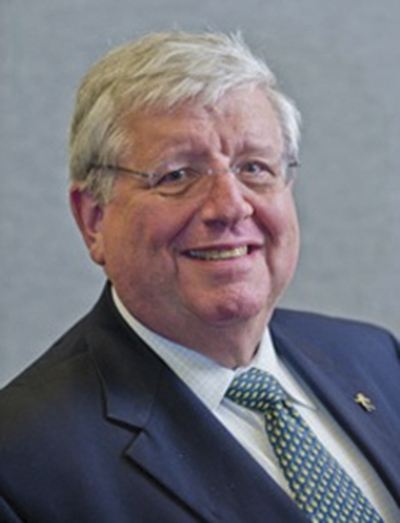Connected or Companion TV: Which Is Better for Broadcasters?

Gary Arlen
“We’re not going to make a bet on a single platform or app,” says Brian Handly, CEO of StepLeader Inc., a work-inducing but realistic stance for a company focused on creating on-demand TV and second-screen apps for TV stations and networks.
“This market is still too fragmented,” Handly adds. “There are so many different options. It’s hard for a station person to figure out.” Handly’s personal preference currently focuses on TV apps, putting broadcast content onto the growing base of “Smart TV” sets with Internet connectivity. StepLeader, which was spun out of Capitol Broadcasting’s “News Over Wireless” project eight years ago, now creates apps for 65 local TV stations, including Capitol’s flagship WRAL-TV Channel 5 in Raleigh, N.C., and for 16 Fox owned-and-operated stations, such as WDFW-TV in Dallas. StepLeader uses the Yahoo! Connected TV apps platform to create its apps.
Those relationships alone reflect the ways in which the TV app sector is lining up, or fragment. Yahoo and Samsung unveiled a multi-year interactive TV partnership late last year, putting Yahoo’s interactive TV software into Samsung’s SmartHub TV sets. Separately, in February, Fox Broadcasting Co. made a commitment to develop a custom sync-to-broadcast service—an extension of its FOX NOW app—for other second-screen TV app providers.
ERRATIC EVOLUTION
Handly sees the Fox initiative into synchronization as representative of the move toward using apps to serve many different platforms.

StepLeader creates apps for 65 local TV stations, including Capitol Broacasting’s flagship WRAL-TV Channel 5 in Raleigh, N.C., and for 16 Fox owned-and-operated stations. This simultaneous broadcaster and technology assault via smart TV apps and handheld tablets/smartphones reflects the erratic evolution of the multiplatform industry, which includes “TV Anywhere”-type access to content along with companion TV viewing.
“There’s room for both,” says Handly. “In some cases, you might want a private experience in a public setting,” which would be better delivered on a handheld device. Other times, everyone watching the smart TV set might want to see the same app, such as on-demand access to a news or sports segment.
“We see a lot of adoption of connected TV apps in markets where there’s a college or university.” He concludes that student viewers in such markets “may not have a cable subscription” and want to watch local content and also download connected widgets from their hometown channels, which they often view on their mobile devices.
The professional video industry's #1 source for news, trends and product and tech information. Sign up below.
“Some stations are surprised that 50 percent of their digital traffic is coming via mobile so they’re still trying to figure out the ’net-connected TV angle,” Handly adds. Against this bifurcated background, he says that StepLeader is “trying to bring companion functionality within our existing apps.”
“We already have that audience. We’re trying to put it into the same experience… and will adapt it as necessary,” he says. His company is working in conjunction with Accelerated Media, a Denver-area firm that focuses on multiplatform development, implementation and analytic services for advertisers and programmers.

Brian Handly StepLeader, which is demonstrating its services at a hotel suite during the NAB Show this week, typifies today’s multiplatform migration. With the options available to media and marketing companies, that migration is going in multiple directions, and will require separate-yet-compatible strategies for companion content (either on a handset or TV app) and for on-demand anytime access via any device.
Guy Finley, executive director of the Second Screen Society, a new consortium of technology, media and social TV companies, insists that “we don’t see ourselves as disruptive.”
This is meant to transition to the new way that people see content,” he says.
Chuck Parker, chairman of the Society, points out there is “more buzz around second screen applications today” because most viewing today (34 out of 37 hours in the typical home) is watched on a traditional TV set. “That’s the promise of the second screen [for] companion viewing and experiences.”
Parker and Finley believe the value of the second screen will grow as companies come up with advertising tech standards to synchronize TV video and second- screen messages and interactivity.
BEACHFRONT PROPERTY
Fox’s recent sync-to-broadcast deals with second-screen providers such as Shazam, Viggle, ConnecTV and NextGuide, emphasize the potential value of a new advertising inventory on the handheld device.
“Fox is opening up new beachfront property on the second screen,” says Zane Vella, CEO of Watchwith, the content syndicator that is coordinating the Fox “companion device” project.
Ooyala Inc., a Silicon Valley-based online video technology company that hosts video content for TV networks and stations (among other content clients) publishes regular analytical reports about how, when and how much material viewers access via its servers. The latest Ooyala Global Video Index shows that in 2012, video viewing on tablets grew threefold over the previous year, and video viewing on smartphones jumped 90 percent from 2011 levels.
“It’s all about the context in which viewers are consuming content,” Ooyala cofounder and President/Products Bismarck Lepe told me. “Media buyers and media planners are going to pay attention and spend a substantial amount” as they see this increase in app and second-screen viewing. His comments echo Vella’s concept of “new beachfront property.”
Lepe’s outlook also mirrors that of StepLeader’s Handly, including the value of standardized platforms and the need to deliver supplemental content wherever the viewer prefers. Lepe sees tablets (which are largely used in the living room, often while watching traditional TV) along with game consoles and smart TVs as key factors in next multiscreen migration.
“In 2013 and 2014, the connected living room experience will gain in overall share of consumption,” Lepe predicts.
That forecast validates Handly’s decision not to “bet on a single platform or app.” It appears that there will be room—and a demand— for everything.
And that leads to the ultimate challenge: Can broadcasters figure out the monetization formula for “everything” and “everywhere?”
Gary Arlen, a contributor to Broadcasting & Cable, NextTV and TV Tech, is known for his visionary insights into the convergence of media + telecom + content + technology. His perspectives on public/tech policy, marketing and audience measurement have added to the value of his research and analyses of emerging interactive and broadband services. Gary was founder/editor/publisher of Interactivity Report, TeleServices Report and other influential newsletters; he was the long-time “curmudgeon” columnist for Multichannel News as well as a regular contributor to AdMap, Washington Technology and Telecommunications Reports; Gary writes regularly about trends and media/marketing for the Consumer Technology Association's i3 magazine plus several blogs.

